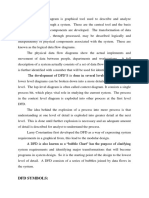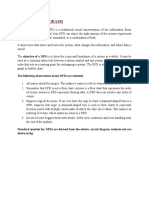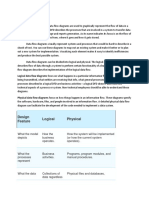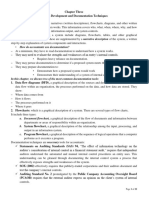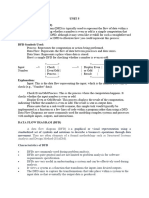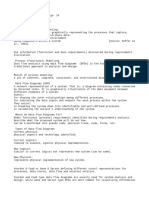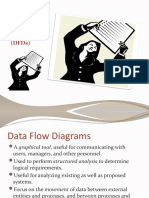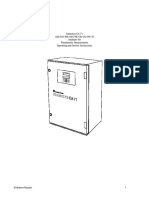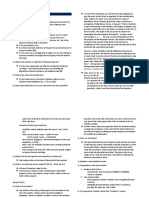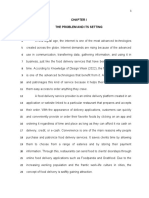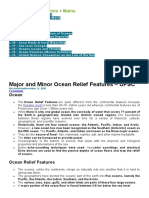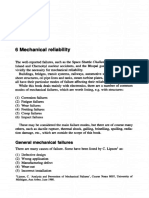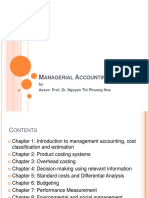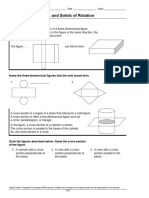0% found this document useful (0 votes)
36 views6 pages5 DATA FLOW DIAGRAMS Modified
Data Flow Diagrams (DFDs) are essential tools in the analysis phase of the Software Development Life Cycle (SDLC), illustrating how data flows through a system using four basic symbols: processes, data stores, external entities, and data flows. DFDs can be organized into levels, with context diagrams representing the entire system and lower-level DFDs detailing specific processes. While DFDs offer advantages such as clarity and ease of understanding, they can also become cluttered and challenging to maintain.
Uploaded by
chesterblack937Copyright
© © All Rights Reserved
We take content rights seriously. If you suspect this is your content, claim it here.
Available Formats
Download as DOCX, PDF, TXT or read online on Scribd
0% found this document useful (0 votes)
36 views6 pages5 DATA FLOW DIAGRAMS Modified
Data Flow Diagrams (DFDs) are essential tools in the analysis phase of the Software Development Life Cycle (SDLC), illustrating how data flows through a system using four basic symbols: processes, data stores, external entities, and data flows. DFDs can be organized into levels, with context diagrams representing the entire system and lower-level DFDs detailing specific processes. While DFDs offer advantages such as clarity and ease of understanding, they can also become cluttered and challenging to maintain.
Uploaded by
chesterblack937Copyright
© © All Rights Reserved
We take content rights seriously. If you suspect this is your content, claim it here.
Available Formats
Download as DOCX, PDF, TXT or read online on Scribd
/ 6




